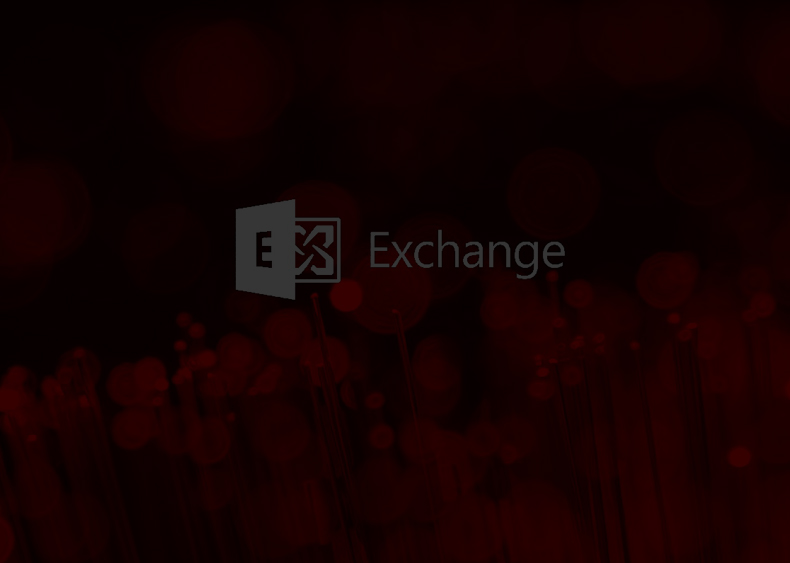Mail Solution
Microsoft Exchange on-premises
Microsoft offers an on-premises email solution known as Microsoft Exchange Server. Exchange Server is a robust and feature-rich email and messaging platform designed to be hosted on an organization's own servers or data centers.
Here are key aspects of Microsoft Exchange Server as an on-premises email solution:

- Email and Messaging: Exchange Server provides enterprise-grade email services, including sending and receiving emails, managing calendars, contacts, tasks, and more. It also offers advanced messaging features such as instant messaging, presence information, and collaboration tools.
- Security: Exchange Server includes a range of security features to protect email communications. This includes anti-spam and anti-malware filtering, encryption, and secure email transport protocols.
- High Availability: Organizations can deploy Exchange Server in a highly available configuration to ensure email services remain accessible even in the event of server failures. This typically involves clustering, load balancing, and redundancy.
- Scalability: Exchange Server can scale to meet the needs of small businesses or large enterprises. Administrators can add additional server resources as the organization grows.
- Integration: Exchange Server integrates seamlessly with other Microsoft products such as Microsoft Outlook, SharePoint, and Skype for Business. It also supports integration with third-party applications and services through APIs.
- Compliance and Archiving: Exchange Server includes compliance features to help organizations meet regulatory requirements for email retention and archiving. It allows for the management and retention of email data.
- Management and Administration: Administrators have extensive control over the configuration, management, and monitoring of Exchange Server. They can set policies, manage user accounts, and perform troubleshooting tasks.
- Hybrid Deployment: Organizations can choose a hybrid deployment model, combining on-premises Exchange Server with Exchange Online (part of Microsoft 365), for a mixed environment that allows some mailboxes to reside in the cloud while others remain on-premises.
- Customization: Exchange Server can be customized to meet specific organizational needs through scripting, automation, and third-party add-ons.
- Support and Updates: Microsoft provides regular updates, security patches, and support for Exchange Server to ensure its reliability and security.
- It's worth noting that while Exchange Server provides control and flexibility, it also requires significant hardware, software, and expertise to set up and maintain. Many organizations are transitioning to cloud-based email solutions like Microsoft 365 (formerly Office 365) for the convenience of hosted email services and reduced infrastructure management overhead. However, Exchange Server remains a viable choice for organizations with specific compliance, data sovereignty, or customization requirements that are best met with an on-premises solution.

Microsoft Exchange online and office 365 solution
Microsoft offers an online email and messaging solution known as Microsoft Exchange Online. It is a cloud-based service provided as part of Microsoft 365 (formerly Office 365) and is designed to deliver email, calendar, and collaboration services over the internet. Here are key aspects of Microsoft Exchange Online:
- Email and Messaging: Exchange Online provides enterprise-grade email services, including sending and receiving emails, managing calendars, contacts, tasks, and more. It offers advanced messaging features such as instant messaging, presence information, and collaboration tools.
- Cloud-Based: Exchange Online is hosted in Microsoft's data centers, eliminating the need for organizations to maintain on-premises email servers. This cloud-based approach simplifies infrastructure management.
- Security: Microsoft includes robust security features with Exchange Online, including anti-spam and anti-malware filtering, encryption, and secure email transport protocols. It also benefits from Microsoft's extensive security infrastructure and threat intelligence.
- High Availability: Microsoft ensures high availability and reliability of Exchange Online through redundancy and failover mechanisms in its data centers. This minimizes email downtime for users.
- Scalability: Exchange Online scales easily to accommodate the needs of small businesses to large enterprises. Organizations can add or remove mailboxes and services as required.
- Integration: Exchange Online integrates seamlessly with other Microsoft 365 services, such as Microsoft Outlook, SharePoint, Teams, and OneDrive for Business. It also supports integration with third-party applications through APIs.
- Compliance and Archiving: The service includes compliance features for meeting regulatory requirements regarding email retention and archiving. This facilitates the management and preservation of email data.
- Management and Administration: Administrators have access to a web-based management console to configure and manage Exchange Online settings, user accounts, policies, and security settings.
- Hybrid Deployment: Organizations can opt for a hybrid deployment model, combining Exchange Online with on-premises Exchange Server if they have specific needs or legacy systems that require on-premises components.
- Automatic Updates and Maintenance: Microsoft handles updates, maintenance, and security patches for Exchange Online, reducing the administrative burden on organizations.
- Subscription-Based: Exchange Online is available through subscription plans as part of Microsoft 365, allowing organizations to choose the features and pricing that align with their needs. Microsoft Exchange Online is a popular choice for businesses and organizations looking for a cloud-based email solution that offers reliability, security, scalability, and seamless integration with other productivity tools. It eliminates the need for on-premises email infrastructure, making it an attractive option for organizations seeking to reduce hardware and maintenance costs while enjoying the benefits of a hosted email service.
Hybrid Email Solution
A hybrid email solution combines both on-premises and cloud-based email services to meet an organization's specific needs. It allows organizations to maintain some email services on their own infrastructure while utilizing cloud-based services for other aspects. One of the most common hybrid email solutions involves integrating an on-premises Microsoft Exchange Server with Microsoft Exchange Online (part of Microsoft 365).
Here are key aspects of a hybrid email solution:

- On-Premises and Cloud Integration: In a hybrid email setup, part of the organization's email infrastructure (e.g., some user mailboxes) remains on their own servers or data centers (on-premises), while other mailboxes or services are hosted in the cloud (typically in a service like Microsoft Exchange Online).
- Flexibility: A hybrid solution offers flexibility in managing email services. For example, organizations can gradually migrate users to the cloud while maintaining some mailboxes on-premises, which is useful during a transition period.
- Cost Control: Organizations can control costs by optimizing their email infrastructure. Less frequently used or less critical mailboxes can remain on-premises, while more critical or frequently accessed mailboxes can benefit from cloud-based services.
- Hybrid Configuration: Configuring and managing a hybrid email solution involves setting up connectors and synchronization between the on-premises Exchange Server and the cloud-based Exchange Online. This ensures that email messages and other data are synchronized between the two environments.
- Single Namespace: Users experience a unified email environment with a single email domain (e.g., company.com), even though some mailboxes are hosted on-premises and others in the cloud. This is achieved through mail routing and domain configuration.
- Scalability: Organizations can scale their email services according to their needs. Cloud-based services are often easier to scale up or down compared to on-premises hardware.
- Coexistence: During the migration process, users in the hybrid environment can continue to collaborate and communicate seamlessly, regardless of where their mailboxes are located.
- Administration: Administrators can manage the entire hybrid environment through a single management console, making it easier to configure and monitor both on-premises and cloud-based email services.
- Compliance and Security: Organizations can enforce security and compliance policies consistently across both on-premises and cloud mailboxes, ensuring that data protection and regulatory requirements are met.
- Support for Legacy Systems: A hybrid solution can accommodate organizations with legacy on-premises email systems that cannot be migrated all at once. It allows for a phased migration approach. Hybrid email solutions are popular among organizations that want to leverage the benefits of cloud-based email services, such as scalability, reliability, and reduced administrative overhead, while still maintaining control over specific email services on their own infrastructure. They are particularly useful during email migration projects when transitioning from an on-premises email system to a cloud-based solution like Microsoft 365.
Copyright @ 2025 www.digitalqassim.com, All Rights Reserved.
Handled by www.ideobiz.co for middle east marketing